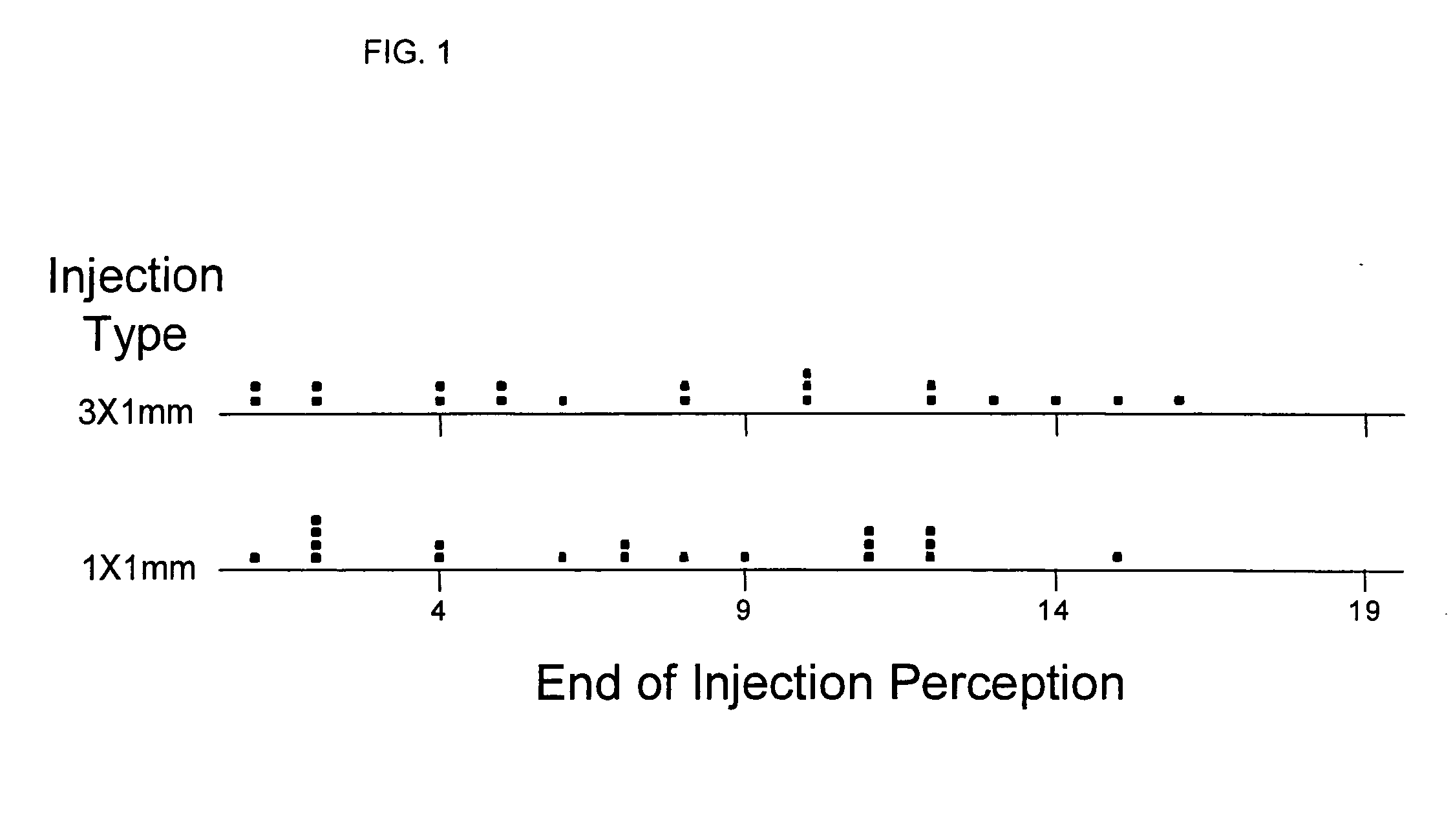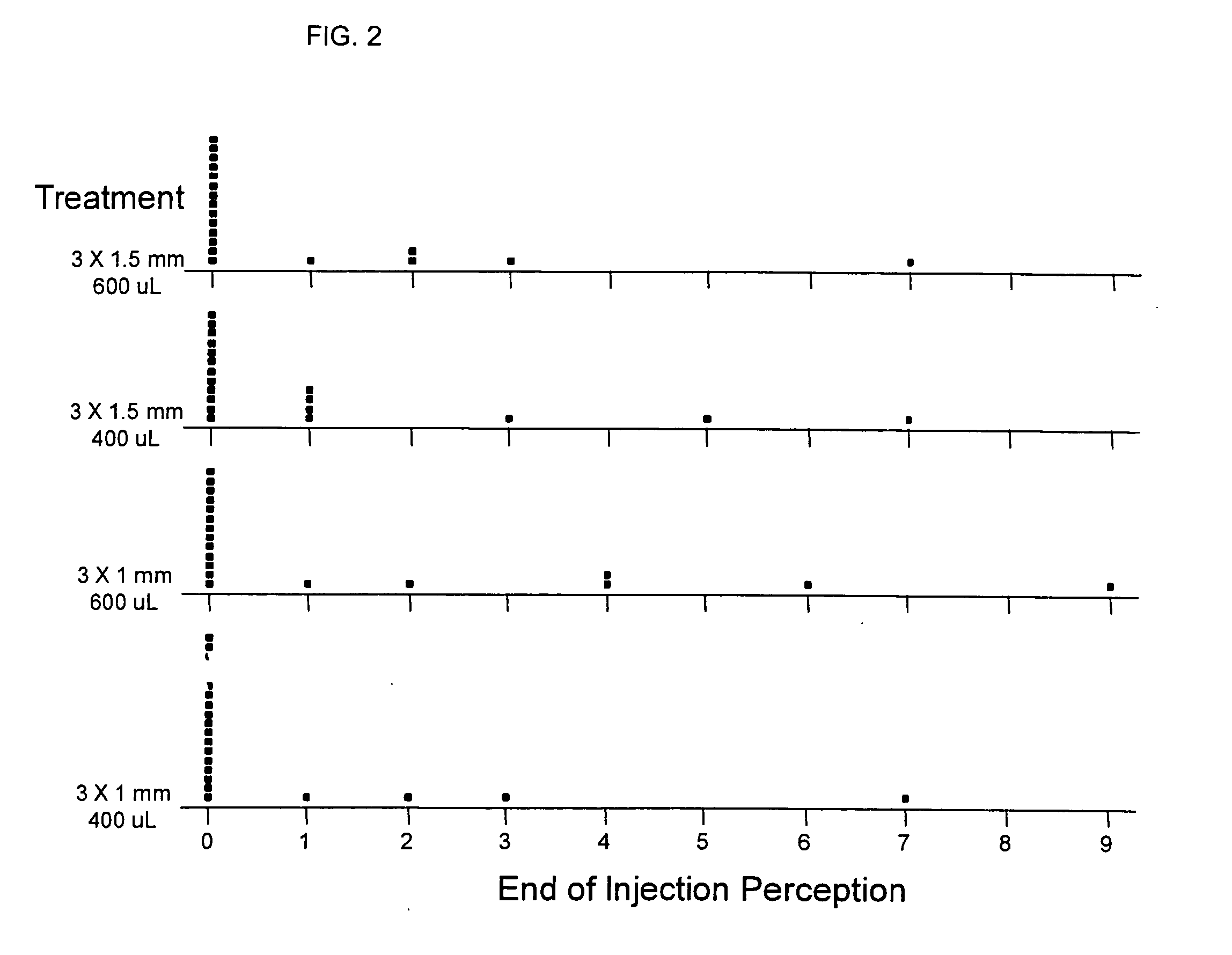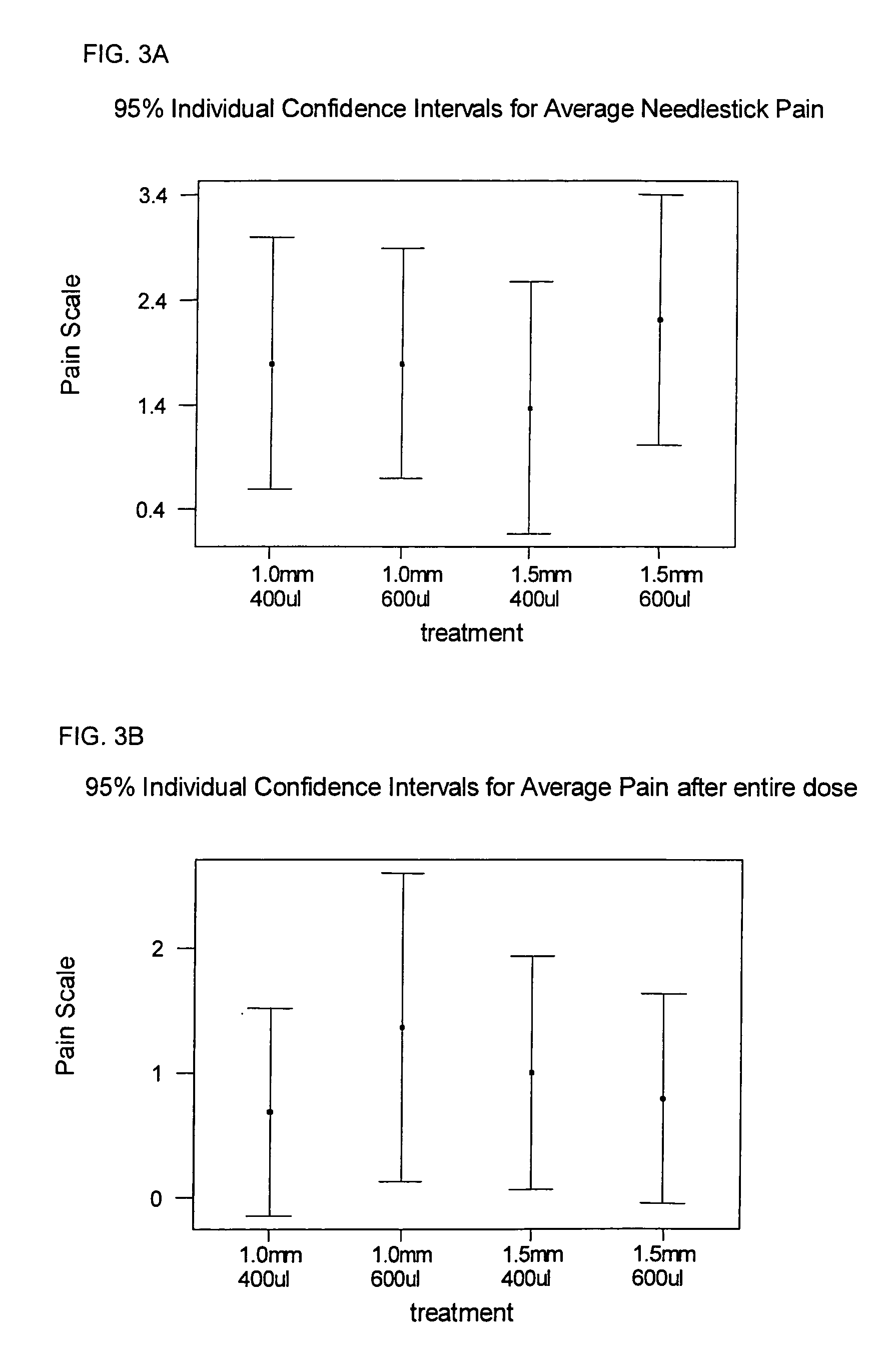Use of benzyl alcohol, and other phenolic preservatives to reduce pain during intradermal injection
- Summary
- Abstract
- Description
- Claims
- Application Information
AI Technical Summary
Benefits of technology
Problems solved by technology
Method used
Image
Examples
examples 1-3
[0035] These examples were from three independently performed clinical trials using the delivery conditions stated in Table 2. Intradermal administration of various volumes of non-preserved saline was performed into the thighs of from 12-20 subjects using the indicated intradermal device and delivery conditions. The saline used in these studies did not contain any of the additives responsible for reducing the perception of the intradermal delivery process. The mean and median scores for pain perception rated on the Gracely pain scale are reported in Table 3. Scores are reported for both the insertion of the intradermal delivery microcannula alone prior to administration of any saline, and for end of injection pain perception, which rates the overall pain of the intradermal saline delivery process.
[0036] These examples illustrate that the insertion of a microneedle based delivery device typically ranks very low on the pain perception scale. Most mean and median device insertion scor...
example 4
[0039] In an independently performed study in 20 subjects, intradermal injections were made using sterile saline for injection containing 0.9% benzyl alcohol, under the conditions of Table 4. The study was performed using methods and techniques as reported above and similar to those used in Examples 1-3, with the principle variation being the use of a pain-reducing additive in the administered solution.
TABLE 4SalineSalineSalineDeliveryDeliveryDeviceVolumeRateDuration# StudyConfiguration(μL)(μL / min)(min)SubjectsExample 4G3 × 1.0 mm600100620H3 × 1.5 mm600100620I3 × 1.0 mm400100420J3 × 1.5 mm400100420
[0040]
TABLE 5Intradermal DeviceEnd ofInsertion PainInjection PainConditionMeanMedianMeanMedianExample 4G1.81.01.40H2.210.80I1.810.70J1.4010
[0041] It can be seen that the pain scores after infusion process for 1 mm and 1.5 mm needle length intradermal delivery devices were much lower in this Example compared to the prior three examples, despite an increase in administered volume. In fact ...
PUM
| Property | Measurement | Unit |
|---|---|---|
| Concentration | aaaaa | aaaaa |
| Structure | aaaaa | aaaaa |
| Volume | aaaaa | aaaaa |
Abstract
Description
Claims
Application Information
 Login to View More
Login to View More - R&D
- Intellectual Property
- Life Sciences
- Materials
- Tech Scout
- Unparalleled Data Quality
- Higher Quality Content
- 60% Fewer Hallucinations
Browse by: Latest US Patents, China's latest patents, Technical Efficacy Thesaurus, Application Domain, Technology Topic, Popular Technical Reports.
© 2025 PatSnap. All rights reserved.Legal|Privacy policy|Modern Slavery Act Transparency Statement|Sitemap|About US| Contact US: help@patsnap.com



